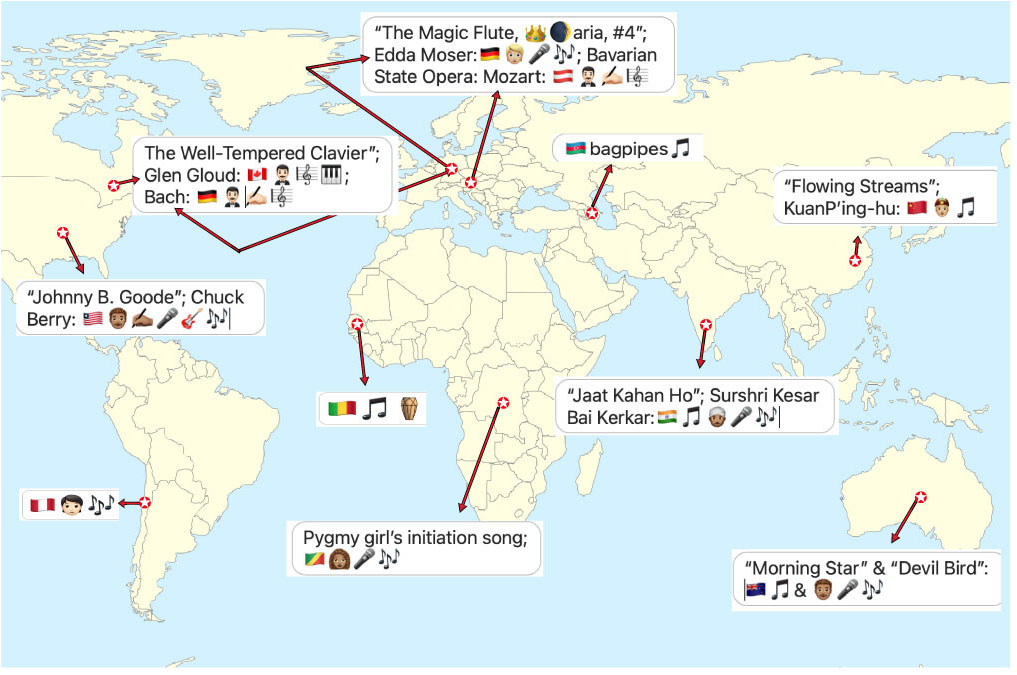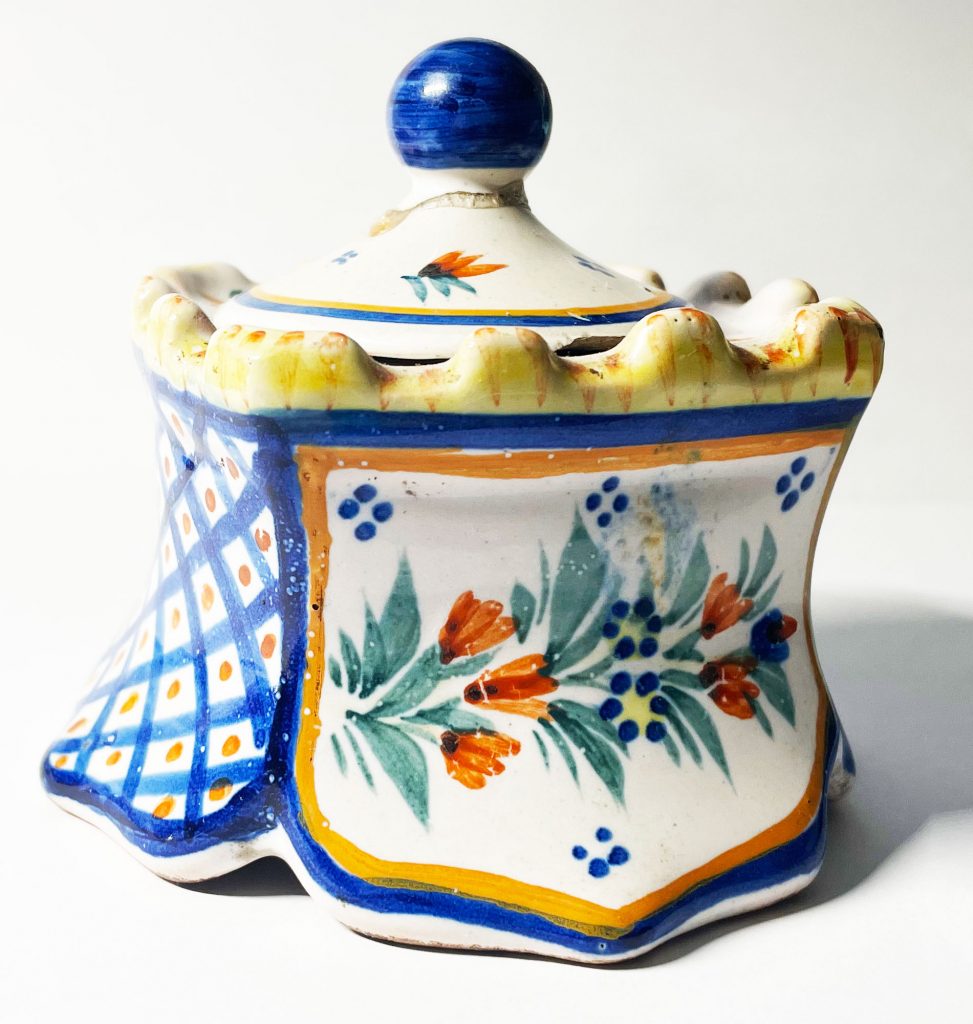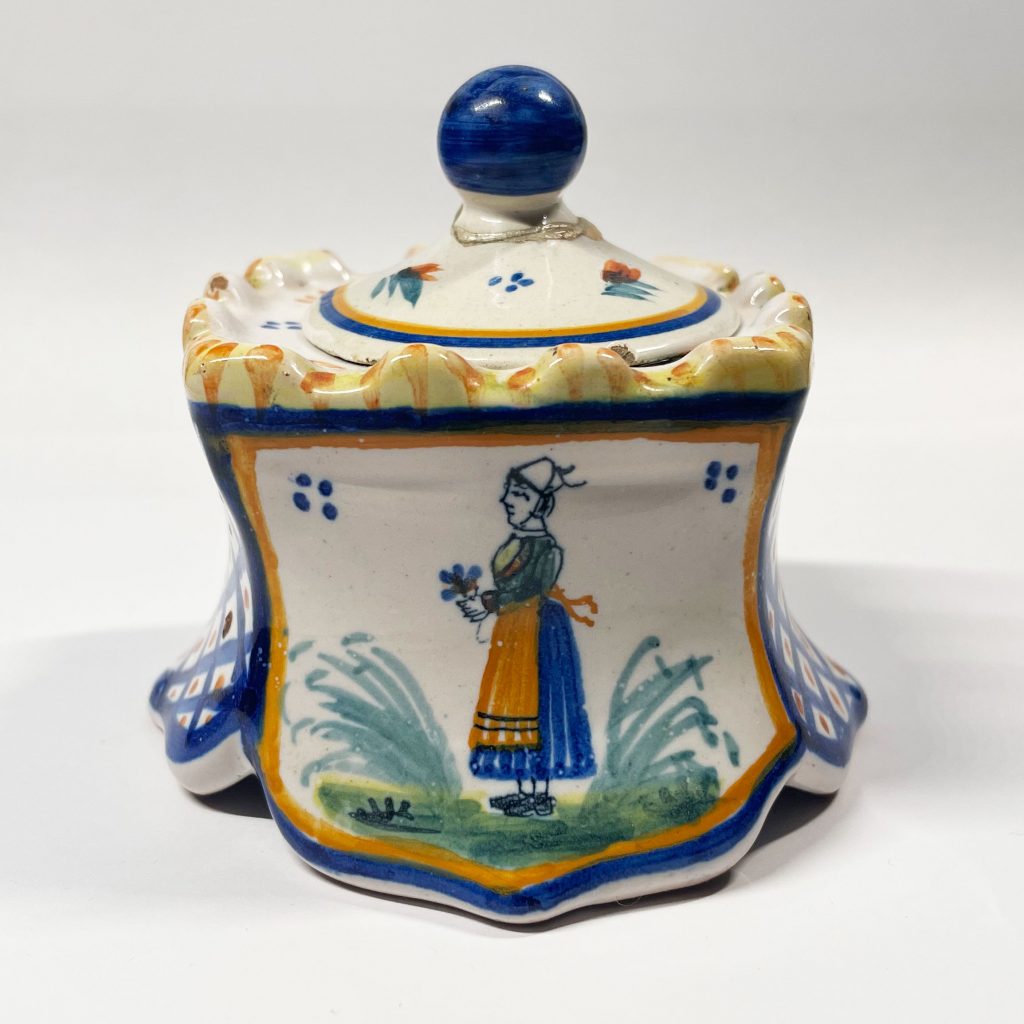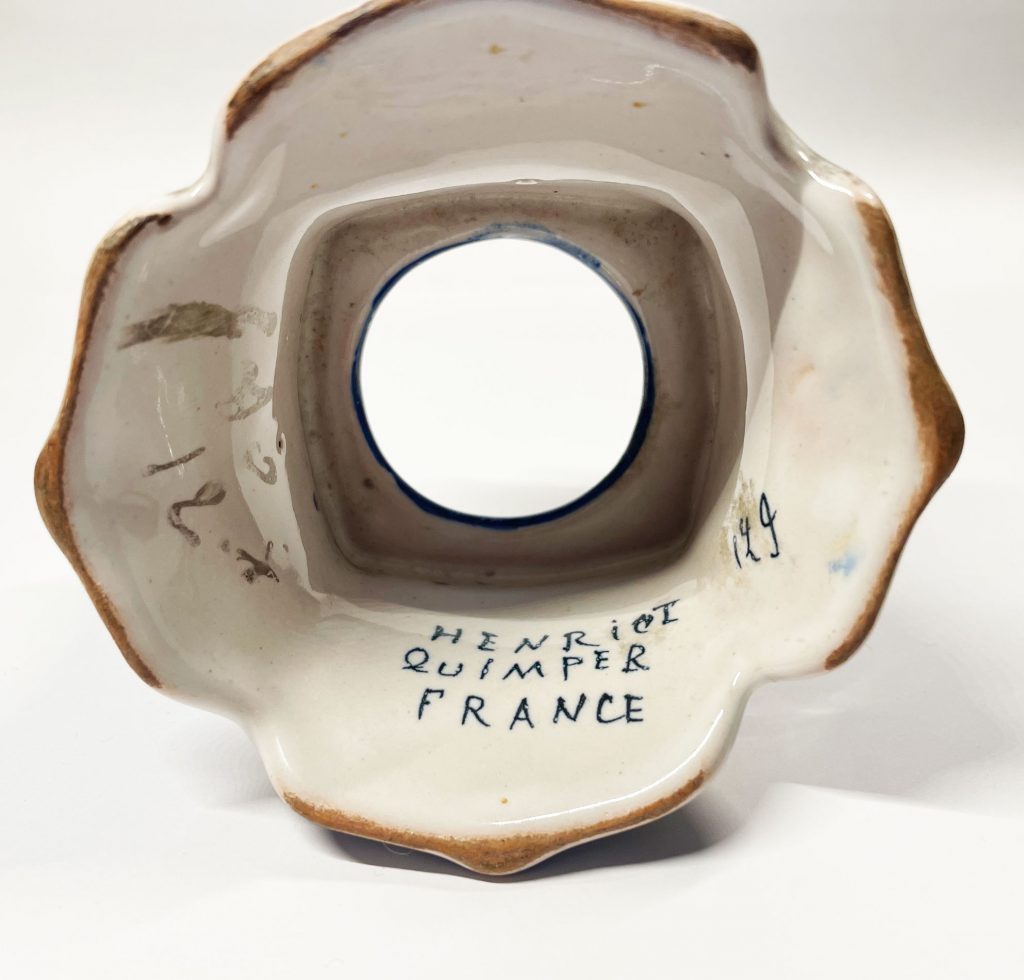The final lossy compression

“Life is understood as emergent, having no natural directions of growth or boundaries or barriers … Like all rhizonanalyses, this [blog] is intended to be an act of experimentation, to foster unpredictable connections.”
(Leander & Bold, 2012, p. 25)
While performing several repeated listening to the curated music selection, I positioned myself within the process (Leander and Boldt, 2012). Not surprisingly, many memories emerged mainly while listening to the only three tracks featuring females. It led me on a journey that attached my thoughts to Smith Rumsey’s article “What can we afford to lose?” to that of a vintage inkwell and its owner, who had not been forced to lead the same type of life even a hundred years earlier as the Peruvian girl lamenting about being forced to marry too young. A couple of days later, the song about Initiating Pgymy Girls ladened my spirit after recognizing the location by its current name. I have witnessed far too many life stories of former citizens who had been forced into sexual slavery and only started their journey to literacy as mature women.
worth or worthless?



integrity of authentication
My twenty-year self stepped into the upstairs bedroom where I found this antique Quimper faience inkwell lying next to the ink, dip pen, a sharpened quill, and paper on a small oak writing table—living in a small French village in a house furnished from the start of the 1900s makes one custodian of endless treasures not yet rediscovered. “This collection [was] intrinsically valuable by virtue of being comprehensive and containing much information that [was] essentially unpublished (Smith Rumsey, 1999), documenting the life of an emancipated woman from the context of the twentieth century.
But, on the other hand, for my husband’s aunt, approaching her centenarian, her home and the content had slipped from significance. Luckily, some of the histories of the lived lives still resided in the memory of another village centenarian. Artifacts tell few tales.
In comparison, the house’s 150 year-history of property titles was still intact and could be quickly retrieved from the governmental archives since the stone house had been built post-Napoleon.
“The respect des fonds – the principle of preserving the organic integrity and original order of collections at the basis of the idea of the archive as a lieu de mémoire”
(Kingston, 2011, p.2).
Years later, on our return to Canada, that house’s content was severely edited to a few shipped boxes: the inkwell, the small oak writing table, and the livre de famille among the artifacts that journeyed to Canada.
… and what does this have to do with Golden Records?
The Voyager’s Golden Record Project, like the French house, archives the life of the ordinary and not the powerful. The difference between the two archives is that the project curated a cultural portrayal of humanity for a future galactic audience during the American feminism movement. On the other hand, perhaps personal archives, individual papers, photographs, and artifacts from the life of an emancipated female in the protofeminism period of France is the start like Carter Woodson did for the African American community, of community-based fair and just representation of an activist population (Smith Rumsey, 1999, 2015) not yet privileged.
The challenge of the Golden Record curation was to create a lossy compression to slim further the 1977 cultural curation to the building blocks of the entire image (Sheheta, 2019) of humanity while still maintaining trust in and integrity of the curation. Contrastingly, the challenge of paring the house archive came down to the cost of shipping and documenting century-old artifacts for permission to remove patrimony from the French territory.
“The whole purpose of memory, of remembering things, is so that the brain can build this model of the world … a cultural model of what is right and wrong in the world.”
(Dr. Smith Ramsey, 2019)
Criterion 1: a major share of the world’s population
Three music selections feature the female voice. The most known, Mozart’s Magic Flute, has a storyline where the Queen of Night, a dark, evil female, rages about Sarastro, the male golden sun god, who has abducted her daughter. Likes the females in the pygmy, and Peruvian songs, the Queen of Night’s daughter, has reached puberty and is waiting to be initiated into womanhood.
Eda Moser – Queen of the Night, Germany
Ironically, a little over 100 years separated my daughter from her great French aunt, who was educated, employed, and a homeowner. However, in those 100 years and even with suffrage and the female liberation movement, females were only worth 11% of the music selection in the 1977 Voyager’s Golden Record Project, even though females make up 49.6% (World Atlas, 2021) of the world’s population. Moreover, the message cast them into traditional subservient bondage.
“Scientists are creatures of the culture in which they swim and grow up, and so … also are vulnerable to the siren sung which … call[ed] chauvinism, geocentrism or anthropocentrism.
(Sagan, 2018)
Criterion 2: a significant share of the world’s population
By selecting a 49.6% share of the population as a criterion, it seemed logical to continue choosing tracks that reflected other significant population groupings. Therefore three groups with significant shares were selected: China (18.0%), India (17.5%) (World Atlas, 2020) and youth (16%) (DESA, 2019). Again, the goal was to select pieces that would have potentially spoken to these populations. Finally, the three tracks would also be considered classics in their genre.
Criterion 3: instrumentations
At first glance, it would appear that these tracks have little commonality being from various countries, genres, and periods; however, the collection happens to represent instrumentation. Additionally, these pieces filled in missing elements. For example, the predominately Muslim country of Azerbaijan works as a counterbalance to Bach, who wrote religious works for the Lutheran and Roman Catholic faiths. Another example is that while Morning Star and Devil Birds are excellent examples of instrumentation, they also represent the Australian continent.
Like the rhizome [these criteria] spread out endlessly, filling in available spaces and sending out new shoots that connect to any other point on the rhizome.
(Leander and Boldt, 2012. p. 25)
References
Department of Economics and Social Affairs, Population Division (DESA). (2019). International youth day, August 12, 2019. United Nations. http://www.unpopulation.org/
Kingston, R. (2011). The French Revolution and the materiality of the modern archive. Libraries & the Cultural Record, 46(1), 1–25. http://www.jstor.org/stable/23053618
Leander, K., & Boldt, G. (2013). Rereading “A Pedagogy of Multiliteracies” bodies, texts, and emergence. Journal of Literacy Research, 45(1), 22-46.
Moïse, R. (2014). “Do pygmies have a history? Revisited: The autochthonous tradition in the history of equatorial Africa 1. In Hunger-Gathers of the Congo Basin (1st ed., pp. 85–116). Routledge.
No Author. (2016, November 14). An Introduction to Quimper faience pottery. Vintage Unscripted. https://vintageunscripted.com/2016/11/14/introduction-quimper-faience-pottery__trashed/
Sagan, C. (2018, November 9). “Lost” lecture: The age of exploration. https://youtu.be/6_-jtyhAVTc
Shehata, O. (n.d.). Unravelling the JPEG. Science + Society, 01. https://zenodo.org/badge/DOI/10.5281/zenodo.2655041.svg
Smith Rumsey, A. (1999, February). Why Digitize? Retrieved June 15, 2019, from Council on Library and Information Resources website: https://www.clir.org/pubs/reports/pub80-smith/pub80-2/
Smith Rumsey, A. (2017, July 11). Digital memory: What can we afford to lose?https://youtu.be/FBrahqg9ZMc
World Atlas. (2020). Countries by percentage of the world population. https://www.worldatlas.com/articles/countries-by-percentage-of-world-population.html
World Atlas. (2021). 10 countries where women far outnumbered men. https://www.worldatlas.com/articles/10-countries-where-women-far-outnumber-men.htmlworldatlas.com